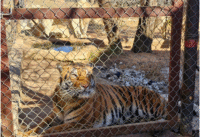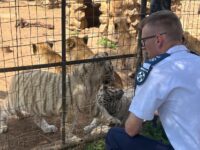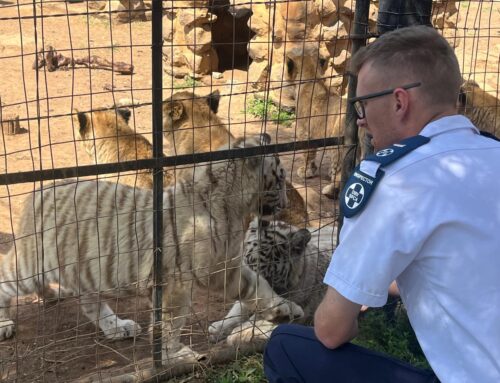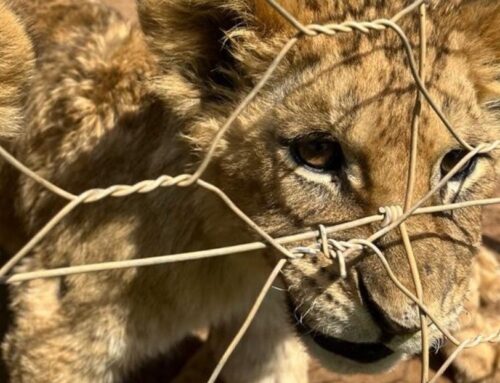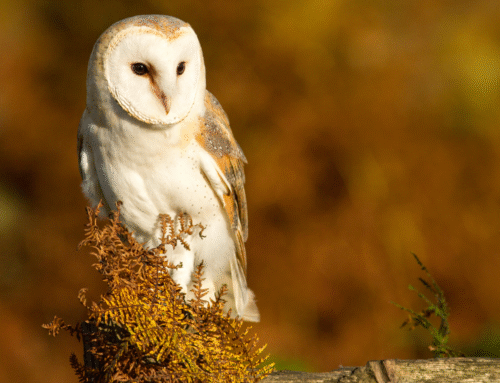On 26 September 2013, Inspector Wendy Willson of the NSPCA’s Wildlife Protection Unit was instrumental in the safe capture of the juvenile brown hyena that had been wandering in the northern suburbs of Johannesburg over a period of several days. The animal’s life was considered to have been at risk as she was in an area with high traffic volumes. Public interest had led to her being tracked to the point that she was being chased.
The female hyena, estimated to be around six months old, was safely darted and captured with the assistance of a wildlife veterinarian. An initial assessment was that she was tired, stressed and had worn down the pads on her paws due to the extent of her running in a built-up area. She, however, responded well to treatment.
Juno was initially cared for at the Johannesburg Zoo where she was exposed to absolute minimal human activity to increase her chances of a successful release back into the wild.
Since attempts to locate Juno’s clan were unsuccessful, Juno was taken to a safe reserve in December 2013 and is being accommodated in a pre-release boma pending her release back into the wild. (Visuals show Juno on the day of her relocation to the reserve. The blue markings are wound spray). Juno will stay in the pre-release boma because she is still too young to be released on her own. Her release is further complicated by the fact that females stay with their clans for most of the lives and integrating Juno with a strange clan is minimal. Male hyenas roam between clans and it is hoped that Juno will try to establish a bond with a roaming male during this time.
The NSPCA has formed a partnership with the Urban Hyena Research Project, aimed at helping other wild hyenas, like her, who inadvertently wander into urban areas and desperately need protection from the public or assistance to find their way home.
Once the time comes for release, Juno will be fitted with a collar in order to follow her movements and she will be monitored by the Urban Brown Hyena Project.
The tracking system will allow the NSPCA and the Urban Research Project to collect information on the hyena clan, as currently almost nothing is known about their habits. How they reach the built-up areas, what routes they use, what is their territory and its size, and how many members in a clan are just a few questions the collaboration is hoping answer.
Hyenas in urban areas are a much more common occurrence than most people realise, and as our built-up areas encroach more into previously wild areas, the incidence of hyenas – and other wildlife – in urban neighbourhoods is on the increase.
WE THANK YOU FOR YOUR GENEROUS SUPPORT OF OUR WORK
If you are as passionate about animals and their well-being as we are, consider supporting our causes by donating.
Latest News Posts
Will You Be the One Who Takes Action?
Most people will scroll past this. But will you be the one who stands up for animals?
Animal welfare isn’t always in the spotlight, but it changes lives – for every neglected, abused, or suffering animal we help. Our teams work tirelessly, often behind the scenes, ensuring animals across South Africa are protected.
This work is relentless. The challenges are immense. But with more hands, hearts, and resources, we can do even more.
The equation is simple: the more supporters we have, the greater our reach, the stronger our impact.
Be part of the change. Become an NSPCA Project Partner today. From just R50 per month, you can help ensure that no animal suffers in silence.

